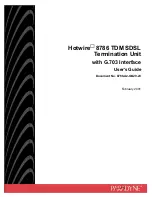
Model 2110 5½ Digit Multimeter Reference Manual
Section 5: Remote commands
2110-901-01 Rev. C/August 2013
5-3
Braces
Braces ( { } ) enclose the parameter choices for a given command string. The braces are not sent with
the command string.
Vertical bar
A vertical bar ( | ) separates multiple parameter choices for a given command string.
Using the MIN and MAX parameters
You can substitute
MINimum
or
MAXimum
in place of a parameter for many commands. For
example, consider the following command:
VOLTage[:DC]:RANGe MINimum
Instead of specifying a specific voltage range, you can substitute
MIN
to set the range to its minimum
value or
MAX
to set the range to its maximum value.
IEEE-488.2 common commands
The IEEE-488.2 standard defines a set of common commands that perform functions like reset, self-
test, and status operations. Common commands always begin with an asterisk ( * ), are four to five
characters in length, and may include one or more parameters. The command keyword is separated
from the first parameter by a blank space.
Use a semicolon ( ; ) to separate multiple commands, as shown below:
*RST; *CLS; *ESE 32; *OPC?
Refer to
(on page 5-4) for more information about common commands.
Querying parameter settings
You can query the current value of most parameters by adding a question mark ( ? ) to the command.
The following command sets the sample count to 10 readings:
SAMP:COUN 10
Then you can query the sample count by executing:
SAMP:COUN?
You can also query the minimum or maximum count allowed using the following commands:
SAMP:COUN? MIN
SAMP:COUN? MAX
If you send two query commands without reading the response from the first, and then attempt to
read the second response, you may receive some data from the first response followed by the
complete second response. To avoid this, do not send a query command without reading the
response. When you cannot avoid this situation, send a device clear before sending the second
query command.
















































